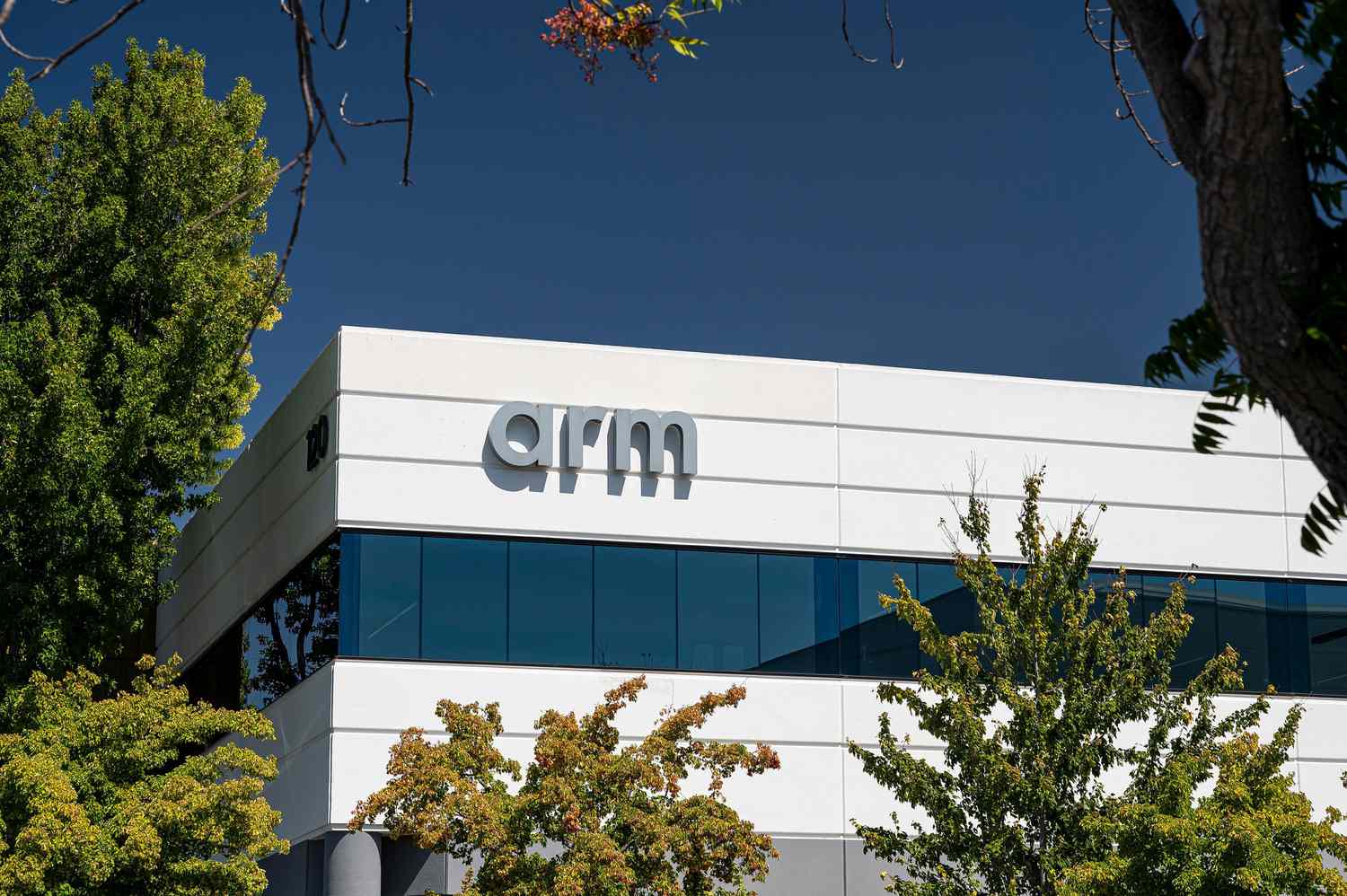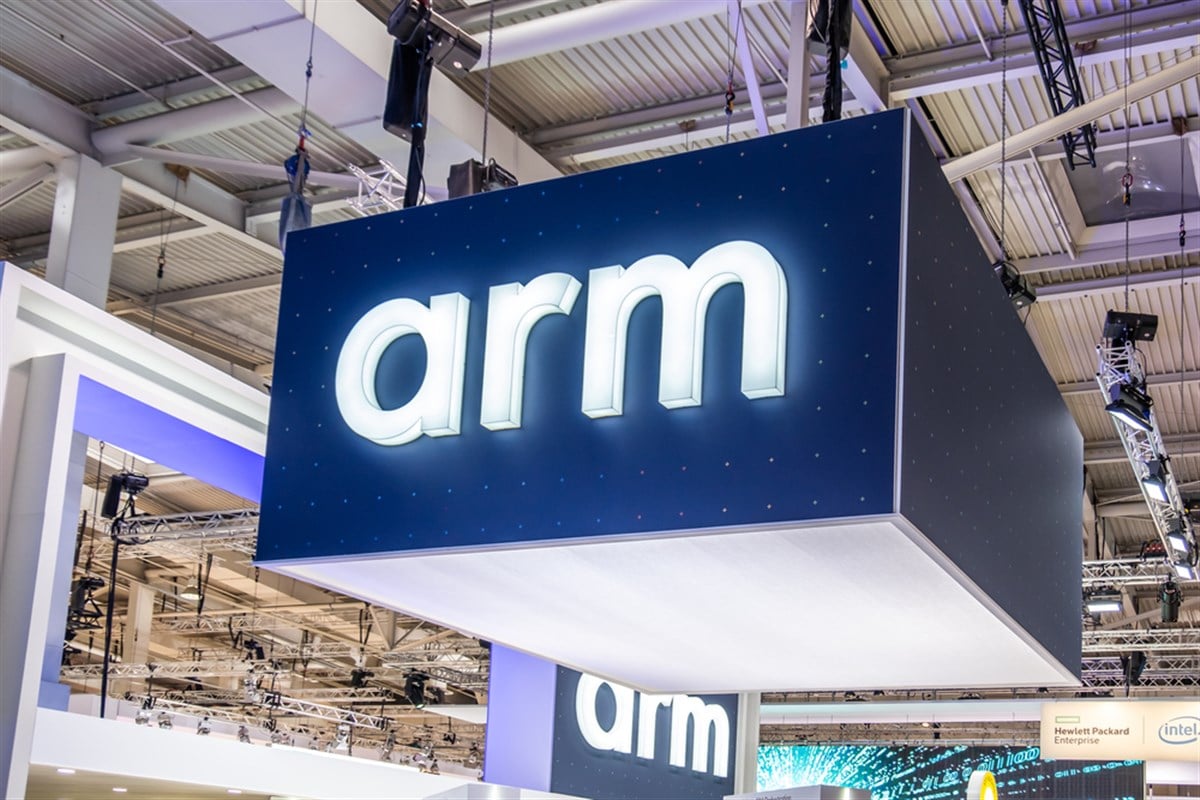Arm Holdings Shares Gain 4% Following Price Target Boost by Goldman Sachs

Arm Holdings (NASDAQ:ARM) shares rose more than 4% intra-day today after Goldman Sachs analysts raised their price target for the company to $143 from $110, while maintaining a Buy rating on the stock.
The analysts expressed increased confidence that Arm will continue to be the preferred architecture for most product categories at the Edge and increasingly in Data Centers. In a world with growing power constraints, they anticipate Arm will gain market share in Server CPUs due to strong momentum with existing customers like AWS (Graviton) and Nvidia (Grace), as well as early success with new customers such as Microsoft (Cobalt) and Google (Axion).
The analysts' positive investment outlook is based on the expected proliferation of Arm-based processors across various cloud platforms and the transition from the v8 to v9 architecture, which involves higher royalty rates. This transition is projected to drive sustained margin expansion and earnings growth.
The analysts forecast a three-year revenue and non-GAAP EPS (excluding SBC) compound annual growth rates (CAGR) of approximately 24% and 30% through 2027, respectively, which significantly exceed the median growth rates within the Semiconductor and Semiconductor Capital Equipment sectors.
| Symbol | Price | %chg |
|---|---|---|
| AMD.BA | 39340 | 0.31 |
| 000660.KS | 620000 | 9.84 |
| LRCX.BA | 4390 | 0.11 |
| TXN.BA | 49300 | 0.81 |

Seaport Global Initiates Arm Holdings With Buy Rating And $150 Target
Seaport Global Securities initiated coverage of Arm Holdings (NASDAQ:ARM) with a Buy rating and a $150 price target, citing the company’s expanding role across multiple markets.
The firm noted Arm’s diversification beyond mobile into data centers, where its technology is now present in about 50% of servers, as well as automotive applications. Analysts expect further penetration both in content per deployment and in market reach.
The company has tripled its addressable market and revamped licensing terms to attract smaller customers, countering competition from open-source RISC-V. Arm is also moving up the value chain by offering more complete chip designs, which could increase value capture despite potential channel conflicts.

Arm Shares Slide As Guidance Disappoints Despite In-Line Q1 Results
Arm Holdings (NASDAQ:ARM) shares dropped more than 12% on Wednesday after the company issued a softer-than-expected outlook, even as first-quarter results met expectations.
For the quarter ended June 30, 2025, the chip designer posted adjusted earnings per share of $0.35 on revenue of $1.05 billion, aligning with consensus forecasts of $0.35 and $1.06 billion, respectively.
Royalty revenue increased 25% year-over-year to $585 million, supported by rising adoption of the Armv9 architecture and growing shipments of Compute Subsystems used in data centers, automotive, and mobile applications. AI and edge computing workloads also contributed to the growth.
Looking ahead, Arm guided for fiscal second-quarter adjusted EPS of $0.29 to $0.37, below consensus of $0.35. Revenue is projected between $1.01 billion and $1.11 billion, with the midpoint slightly under Wall Street's $1.07 billion estimate.

Arm Tops Earnings Forecasts but Shares Drop 4% on Narrowed Outlook
Arm Holdings (NASDAQ:ARM) delivered stronger-than-expected third-quarter earnings, but a tightened full-year outlook disappointed investors, sending shares down over 4% in pre-market trading Thursday.
The chip designer reported earnings per share of $0.39, significantly outpacing analysts' expectations of $0.25. Revenue for the quarter also came in stronger than anticipated at $983 million, surpassing the projected $946.8 million.
Despite the robust quarterly results, Arm tempered its expectations for the year ahead. For the fourth quarter, the company forecasts earnings per share between $0.48 and $0.56, in line with analysts' average estimate of $0.53. Revenue is expected to range from $1.175 billion to $1.275 billion, closely matching Wall Street’s projection of $1.23 billion.
Looking at the full year, Arm narrowed its revenue guidance to a range of $3.94 billion to $4.04 billion, tightening its previous estimate of $3.8 billion to $4.1 billion. While the midpoint of the revised range, $3.99 billion, sits slightly above analyst expectations of $3.96 billion, the company no longer expects to hit the higher end of its earlier forecast.
Similarly, the chipmaker refined its full-year earnings per share outlook, adjusting the midpoint to $1.60 from its prior forecast of $1.55. While the revision reflects incremental improvement, the cautious stance on reaching upper-end targets weighed on investor sentiment.

Arm Tops Earnings Forecasts but Shares Drop 4% on Narrowed Outlook
Arm Holdings (NASDAQ:ARM) delivered stronger-than-expected third-quarter earnings, but a tightened full-year outlook disappointed investors, sending shares down over 4% in pre-market trading Thursday.
The chip designer reported earnings per share of $0.39, significantly outpacing analysts' expectations of $0.25. Revenue for the quarter also came in stronger than anticipated at $983 million, surpassing the projected $946.8 million.
Despite the robust quarterly results, Arm tempered its expectations for the year ahead. For the fourth quarter, the company forecasts earnings per share between $0.48 and $0.56, in line with analysts' average estimate of $0.53. Revenue is expected to range from $1.175 billion to $1.275 billion, closely matching Wall Street’s projection of $1.23 billion.
Looking at the full year, Arm narrowed its revenue guidance to a range of $3.94 billion to $4.04 billion, tightening its previous estimate of $3.8 billion to $4.1 billion. While the midpoint of the revised range, $3.99 billion, sits slightly above analyst expectations of $3.96 billion, the company no longer expects to hit the higher end of its earlier forecast.
Similarly, the chipmaker refined its full-year earnings per share outlook, adjusting the midpoint to $1.60 from its prior forecast of $1.55. While the revision reflects incremental improvement, the cautious stance on reaching upper-end targets weighed on investor sentiment.

Arm’s Earnings Beat Expectations But Stock Drops 5%
Chip design leader Arm (NASDAQ:ARM) reported better-than-expected second-quarter earnings, yet its stock declined more than 5% in pre-market today. The company posted adjusted earnings per share of $0.30, outperforming the $0.26 analyst consensus, and revenue reached $844 million, ahead of the expected $744.31 million.
Arm’s revenue saw a 5% year-over-year increase, bolstered by record royalty income and strong licensing momentum. Royalty revenue jumped 23% to $514 million, driven by rising adoption of Armv9 technology and a rebound in the smartphone sector. However, license and other revenue dropped 15% from the prior year to $330 million, attributed to typical variations in the timing and value of major agreements.
Key metrics showed growth with annualized contract value rising 13% year-over-year to $1.253 billion, and remaining performance obligations up 10% from the previous quarter, reaching $2.385 billion.
For the third quarter, Arm projected earnings per share of $0.32 to $0.36 and revenue between $920 million and $970 million, aligning closely with Wall Street expectations at the midpoint.

Arm’s Earnings Beat Expectations But Stock Drops 5%
Chip design leader Arm (NASDAQ:ARM) reported better-than-expected second-quarter earnings, yet its stock declined more than 5% in pre-market today. The company posted adjusted earnings per share of $0.30, outperforming the $0.26 analyst consensus, and revenue reached $844 million, ahead of the expected $744.31 million.
Arm’s revenue saw a 5% year-over-year increase, bolstered by record royalty income and strong licensing momentum. Royalty revenue jumped 23% to $514 million, driven by rising adoption of Armv9 technology and a rebound in the smartphone sector. However, license and other revenue dropped 15% from the prior year to $330 million, attributed to typical variations in the timing and value of major agreements.
Key metrics showed growth with annualized contract value rising 13% year-over-year to $1.253 billion, and remaining performance obligations up 10% from the previous quarter, reaching $2.385 billion.
For the third quarter, Arm projected earnings per share of $0.32 to $0.36 and revenue between $920 million and $970 million, aligning closely with Wall Street expectations at the midpoint.







